Lotus Eletre review: 905hp electric super SUV driven
The Eletre is not your typical Lotus, but it’s brutally quick and luxurious on the inside.
Published on Dec 08, 2023 03:40:00 PM
20,815 Views
Follow us on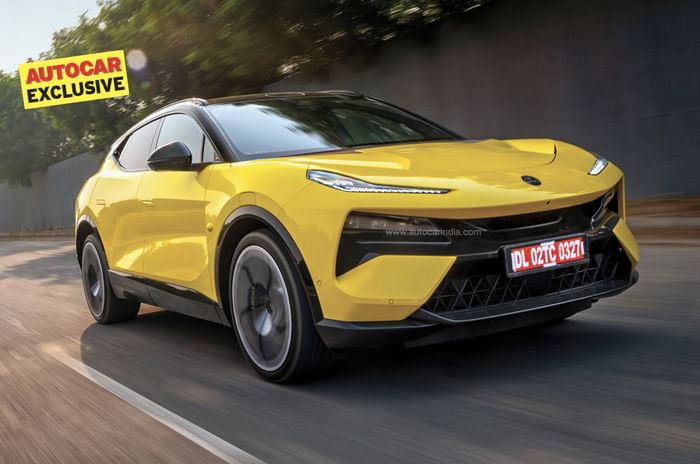
0-100 takes just 2.95 seconds, extremely fast for something so heavy.
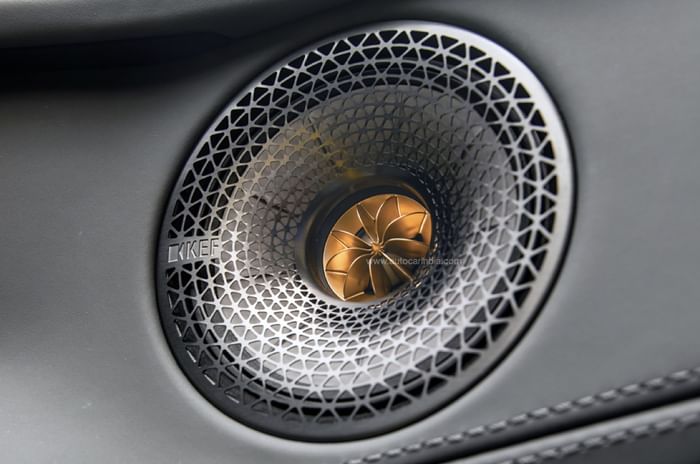
KEF open speaker looks cool, sounds great.

Instrument panel is a slender screen; look close.

0-100 percent on 22kW charger takes 6 hours.
We Like
- Straight-line performance
- Neat, sure-footed handling
- Luxurious and comfy cabin
We Don't Like
- ADAS system not seamless
- Fiddly cabin controls
Keyboard warriors. Gotta love ‘em. Quick to pass judgement and always ready to take a stand; they are generally young, restless and often trigger happy. Truth be told, we’ve been there, done that. Sussed a car on the strength of its spec sheet and passed judgement. It’s almost a rite of passage, a stepping stone to greater understanding and a more holistic view. And boy oh boy, does the keyboard sena ‘love’ the Lotus Eletre! It’s sort of the perfect storm, isn’t it?

A car so out of character with the weave of its DNA, it has a huge target painted on its tailgate. But beyond spec and speculation, what is the new Lotus Eletre like? Is it quick enough; light and nimble on its feet; sporty and fun to drive; at home on our roads? Then, does it drive and feel like a Lotus, and is the cabin luxurious, comfortable and equipped with sufficient ‘goodies’ to justify the asking price of Rs 2.99 crore for this top-of-the-line R version?
Lotus Eletre R design
About as long as a Mercedes S-Class, even wider and blessed with a form that is unique, there’s nothing quite like a Lotus Eletre. View it in profile and it clearly is a born-electric SUV. The stub nose and elongated centre section as well as the marginally elevated cabin clearly point to this. What also helps the shape stand out is that it is a uniquely high-riding SUV with a ‘low-slung’ roofline, with steeply raked front and rear windscreens adding to the visual drama. Also particularly appealing, especially in the flesh, is the design. Convincingly of the future, with bold details that help it stand out, the Eletre is an eyeball magnet.
| Lotus Eletre Price, Mileage, Specifications, Features and Variants | |
|---|---|
| Brand | Lotus |
| Model Name | Eletre |
| Lotus Eletre Price | ₹ 2.92 - 3.43 crore |
| Lotus Eletre Range/Mileage | Electric : 490 - 600km |
| Lotus Eletre Specifications | SUV | 5 doors | 5 seats View All Specs |
| Lotus Eletre Features | Matrix LED headlight | 15.1-inch Touchscreen display | 7 airbags View All Features |
| Lotus Eletre Variants | EV | EV S | EV R View All Variants |
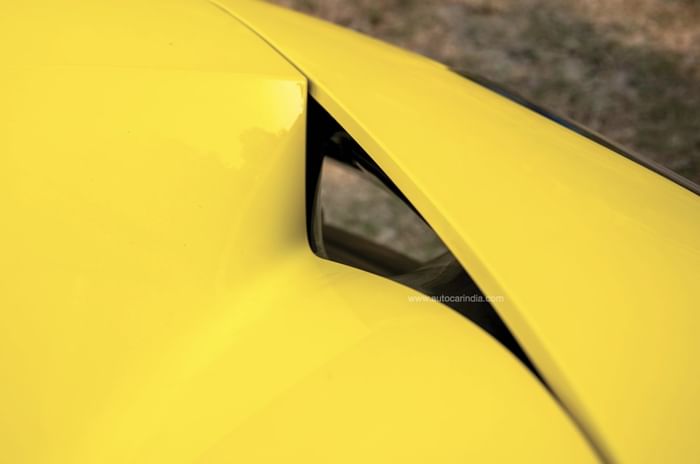
The Lotus sportscar-like raised ‘bonnet’ sets the tone, with its angular headlights, bulging fenders and steeply raked ‘A’ pillar clearly giving it the look and feel of a sportscar. The designers have also ‘lightened’ the front by masking the centre section in black. This reduces visual bulk considerably, and what gels nicely are the winglet-like wedges near the chin. Around the side, the twotone paint scheme helps further ‘lower’ the all-electric SUV, and what also helps give it a planted stance are the bulging wheel arches and ridge line along the waist. There’s plenty to look at and appreciate around the rear as well, especially the connected ‘ribbon’ tail-lights, the large vents in the bulging rear wheel arches and the split spoiler; the latter also helps the rear LIDAR get a clear and unobstructed field of view.
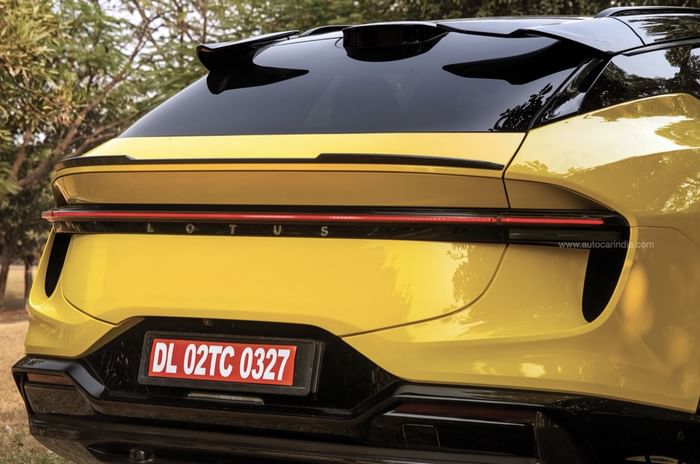
The Eletre allows more air to flow through its body than most supercars, enhancing stability and downforce in half a dozen specific areas. Lotus calls this porosity. (See box) The spec that will make most stand up and pay attention is that the Eletre R weighs upwards of 2,640kg, depending on how you specify it... cue the borrowed outrage here. That’s almost the weight of three traditional Lotus sportscars. Lotus, however, has never made a four-door with a big boot, a full-fledged SUV with a heavy four-wheel drive system, or, for that matter, even a heavy, electric one. For the record, Tesla’s most powerful Model X also weighs upwards of 2.5 tonnes. And so will all electric performance SUVs of this size and spec from other players in future, have no doubt about that. Also adding weight is the 112kWh battery, which probably weighs upwards of 650kg alone.
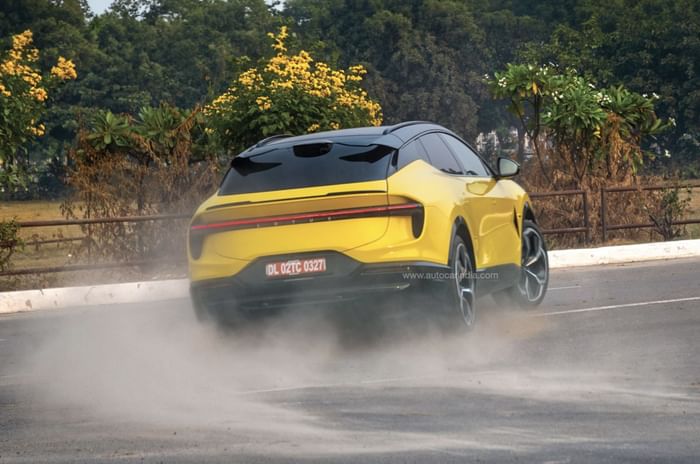
This clearly is no two-seat sportscar with a small-capacity engine. Lotus has, however, tried to reduce weight. Its Electric Premium Architecture, built in collaboration with Geely – who currently owns Lotus – is made of 47 percent high-strength steel and 43 percent aluminium. Under the skin, the Eletre runs an 800V system and a fast 350kW DC charger (none currently available here) can juice up its battery from 10-80 percent in just 20 mins. A slower 22kW home charger or AC wall-box takes 5.8 hours. Claimed range under WLTP test conditions is 490km, and that should suffice. But drive it hard most of the time like we did, and you could easily knock a 100km or more out of that range. What helps add to the range when you are driving it in a relaxed and refined manner is that it has a low drag coefficient of 0.26. Also part of the specification, essential in countering the bulk of this hyper SUV, are two chamber air springs, active anti-roll bars and rear-wheel steering. Another innovation is the Eletre’s active rear spoiler.

Mounted flush into the tailgate, it works in combination with the split roof spoiler and automatically adjusts between three positions. When deployed at an angle of 18 degrees, the spoiler reduces drag by 1.8 percent and increases downforce by up to 60kg. At 32 degrees, it can more than double downforce to 112.5kg and when fully deployed at 34 degrees, it works like an air brake. This Eletre R also features a Porsche Taycan-like two-speed transmission: good for acceleration, high speeds and efficiency.
Lotus Eletre R performance and Comfort
First, let’s talk performance; and let’s be clear, there’s a massive amount here, lurking silently under the accelerator pedal. How much? A chassis warping 905hp and 985Nm of all-electric grunt. And all you need to do, to unleash it, is flick the mode to ‘Track’, put your left foot on the brake, plant your right foot down and let it go. No complicated launch control procedure, no unnecessarily fiddly seven-step nonsense. Do this and the Lotus is catapulted towards the horizon with immense force, the shove in the back having the potential to knock the air out of your lungs if you are not ready for it.

With driver aids partially switched off, the wheels fight for traction soon after the first burst off the line, and as you pass 110kph or thereabouts the Eletre shifts to a higher gear with a distinct shunt; the taller gear actually helping it accelerate better at that point. The ramp up in pace is so strong, the Eletre reels in the long straight and dispatches half a kilometre or so in the space of a dozen or so seconds. To say the pace is heady would be something of an understatement. This is crazy, crazy performance even from behind the wheel of a supercar, and to experience it in a big, bulky SUV is even more disorienting. Lotus claims a time of 2.95 seconds for 0-100kph; it feels even quicker. And crazier still is the 80-120kph time of less than 1.9 seconds. Do this at home please; hold on to an imaginary steering wheel and count the seconds out loud if you want to truly understand just how explosively fast it is. It’s so rapid that repeated runs to 100 and beyond, followed by rapid braking caused me to feel slightly car sick, from BEHIND the wheel. Wonder what the 0-200kph time is. The Tesla Model X P100D, its only real rival as yet, does 0-100 sec in 3.1 seconds.
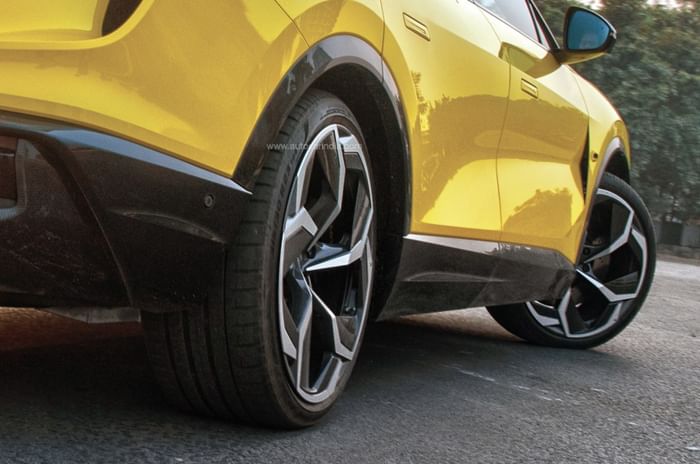
Equally impressive is that throttle responses alter just the right amount when you switch modes and come down from Track to Sport, for example. And in Tour mode, ease your foot onto the pedal and it even responds gently, the metering almost perfect. So much for straight-line performance. What’s just as impressive is that the Eletre also has the brakes, chassis, chassis systems and grip to make use of all this performance. In Track mode, the bite from the brakes is very strong and gets progressively stronger, body control is really tight, the active anti-roll bars coming swiftly into play. What helps the Eletre handle like something half its size is the rear-wheel steering. So the Eletre feels fast, fun, agile and confidence inspiring. It is a Lotus, after all. This allows me to carry plenty of pace into corners and drive out accelerating hard on the other side. The throttle is a bit too reactive in Track mode, so going to the Individual settings and dialling it down makes sense, and on less than-perfect tarmac you will need to roll back suspension stiffness as well. The steering, though direct and accurate, isn’t as feelsome or as talkative as that on a lighter, smaller Lotus; turn-in isn’t as crisp or clean; and the chassis doesn’t quite encourage you to play catch. But then, is Porsche’s Cayenne SUV as agile and chuckable as a Cayman or a Boxster? No; and this is equally true here. However, it must be said, the Taycan feels more like a Porsche than the Eletre feels like a Lotus. The Taycan isn’t as high off the ground or as heavy. Comments, letters, posts welcome.

At low speeds in Tour mode, the light steering, however, works superbly. The Eletre is easy to drive without paying too much attention, and though you feel the stiffness in the air springs and the huge rims make their presence felt, ride quality is more comfortable once you get up to speed. Go to smaller wheels – these are massive 23s – and it should be better still. Also annoying in our conditions is that the ADAS system keeps interfering and is difficult to turn off. While it could be a lifesaver in the right conditions, Lotus needs to make it easier to roll back assistance.
Lotus Eletre R interior and features
Another area where the Eletre does a convincing job as a luxury hyper EV is on the inside. Step in and what strikes you first is the massive space, closely followed by the highquality materials and the impressive fit and finish. The sense of space is real. Due in part to the born-EV platform with its long three-metre wheelbase, the cabin also has a compact dash, plenty of width and tall sporty seats that aren’t too wide. Perceived material quality and feel are genuinely first-class and the metallic buttons – some finished in gold with the reactive LED inserts – add to the bling in the cabin. There are even real metal buttons on the steering wheel. Quality apart, what also works is the design. Lined in leather and suede or Alcantara, and split by a prominent, raised centre console, the design features a large central touchscreen, a unique and slim digital instrument panel as well as a similar display for the front passenger.

The metal gear selector and temperature control toggle switches are knurled and you can either raise or lower the cup holders on the centre console; which looks really cool. Once behind the wheel, you also quickly notice how wide this 2.0-metre-plus car is and how unique it feels, sitting high up with a sportscar-like steeply raked windscreen. Also impressive is that both front and rear seats can be adjusted via power controls on their base; you get heating, cooling and massage functions for all seats, and lumbar and lateral support can be adjusted in the rear too. Even more impressive is the space at the rear; there’s acres here. The seats are more sporty than luxurious and rear seat comfort isn’t limo-like, but the fact that you can adjust the seat considerably adds to comfort. You also get your own screen in the rear as well as plenty of storage space, around and above the central console.
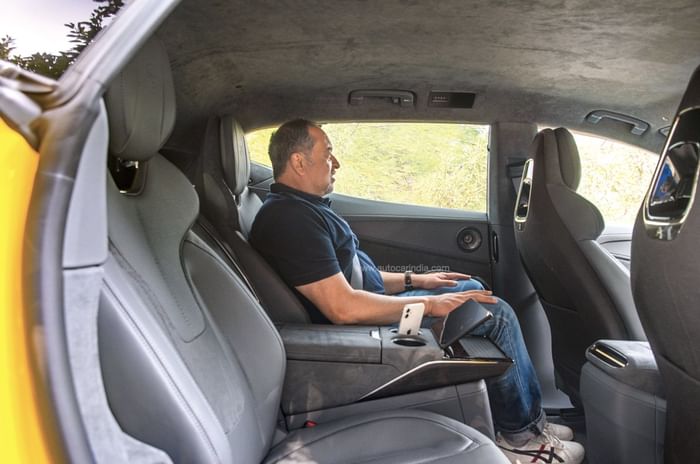
The large central screen up front, however, hasn’t been well integrated into the design of the cabin and isn’t the most intuitive to use. And this is true of many of the shortcut buttons on the steering wheel. In addition, the paddles that control the regen and driver modes are finished in what feels like quite ordinary plastic and while Apple CarPlay and Android Auto will be available, the car we had didn’t have the systems installed yet. And nor did it come with a sunroof. You can opt for one though, and equipment levels are impressive. The Eletre is equipped with a full suite of advanced driver assistance systems (ADAS) that uses 34 sensors in total, including the four deployable LIDAR units, six radars, seven 8MP HD cameras and 12 ultrasonic sensors for a 360-degree view. Additional features include a soft close door, privacy glass, active rear spoiler, configurable ambient lighting, illuminated side sills, air quality system and a 2,160-watt 23-speaker KEF Reference Audio system, which sounded sharp as a tac.

You can also opt for a five seater version, and a Ceramic Brake Pack is offered on the Eletre R. There’s also a large HUD and a remote parking function on the smartphone app. On this version, you also get 611 litres of boot space. The five-seater gets more at 688 litres, which is very generous.
Lotus and Geely
Lotus is now owned by Chinese carmaker Geely. This is why the Eletre is not made in England but in Wuhan, China. Designed in the UK and partly engineered in Germany, there will be more cars on this platform; a coupe-like sedan and a smaller SUV. And Geely will use the platform as well, which will make it more cost-effective. Lotus will make more sportcars in the UK but only at a later stage, and all of them will be EVs.
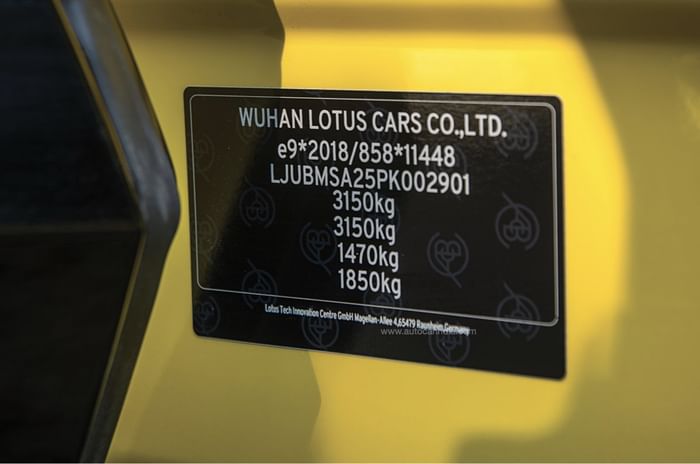
Lotus Eletre R price and verdict
The all-electric Lotus Eletre impresses on many levels. Currently, in a class of one as far as high-performance all-electric SUVs go in India, it has massive performance, the requisite grip and handling chops, and a genuine luxury car vibe. Additionally, the cabin is big, nicely finished and well-equipped, and what’s unique is that the Eletre has plenty of character. It isn’t the best handling or the most chuckable super or hyper SUV around (some rivals are more engaging to drive), the cabin has a few ordinary bits, the electronic interface could be better and some customers will baulk at the fact that the car is manufactured in China.
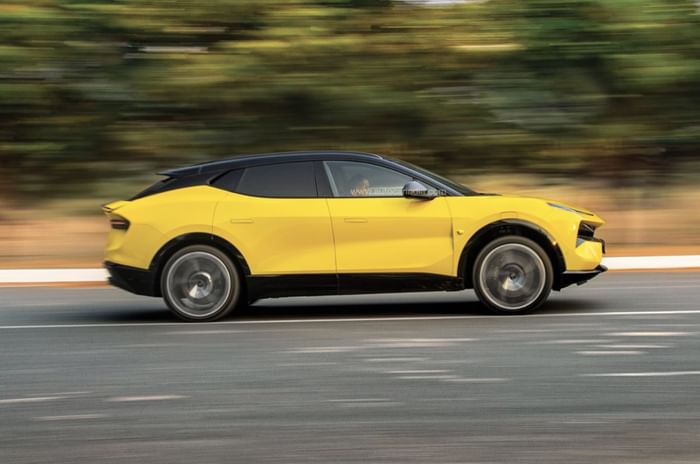
What will draw in many is that at Rs 2.99 crore for this top-of-the-line R version, you do get a lot of performance SUV for your money. Costing approximately Rs 1.2 crore-1.4 crore less than the Urus, its most direct rival, what it has, immediately, is a foot in the door. Those of you looking for a performance SUV, keep this high on your list. It has the power to thrill and deliver a pleasant surprise.
Also see:
Lotus Emira India launch in 2024
Tech Specs 
Copyright (c) Autocar India. All rights reserved.


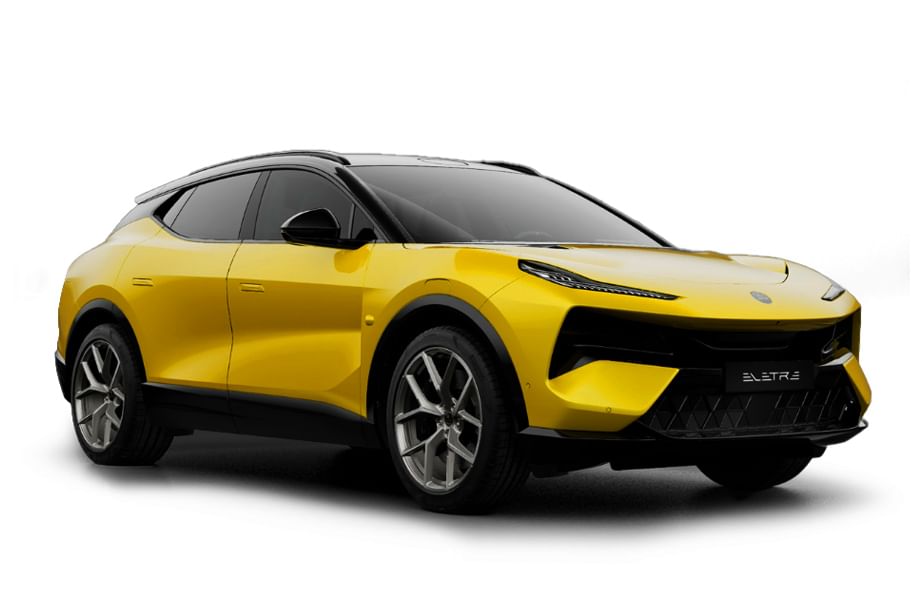




 Price
Price Engine
Engine Transmission
Transmission Acceleration
Acceleration Body
Body Suspension
Suspension Dimensions
Dimensions Range
Range
Comments
Member Login
Personal Details
No comments yet. Be the first to comment.